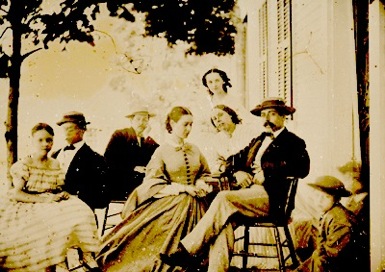The History .

Visitors to Peralta Hacienda Historical Park walk onto a map of time. On a rise that looks east to the hills and west to the bay, they first come upon an 1870 Italianate frame house. Antonio Peralta built this house when earthquakes damaged his nearby adobes. A few feet away, an outdoor stage commemorates the house's original location, before it was moved in 1897 to fit the new city grid. Further along is the footprint of a large adobe, built in 1840 by Antonio Peralta with his Mexican and indigenous laborers when California was part of Mexico. Lastly, there are the traces of a smaller adobe, built in 1820 to establish Luis Peralta's claim to the 45,000 acres granted him by Governor Solá in the twilight of the Spanish colonial period.
Visitors can imagine indigenous dwellings nearby that must have existed at this time, when Native Californians still outnumbered the Spanish-speaking settlers. The park slopes steeply down to the curved, wooded banks of Peralta Creek, which has its own special social and ecological history.
Forgotten for generations, the 1870 Peralta House is now restored to its original condition, and the surrounding Park will be landscaped to tell its forgotten story and provide enjoyment of the local community. This newly established six-acre facility is the last vestige of the Peraltas' 45,000-acre Rancho San Antonio, estimated to be the most valuable Spanish land grant ever made in California. It stands in the middle of the diverse Fruitvale District, which is the geographic center of the City of Oakland. In a multicultural sense, it represents the founding settlement of Oakland.


